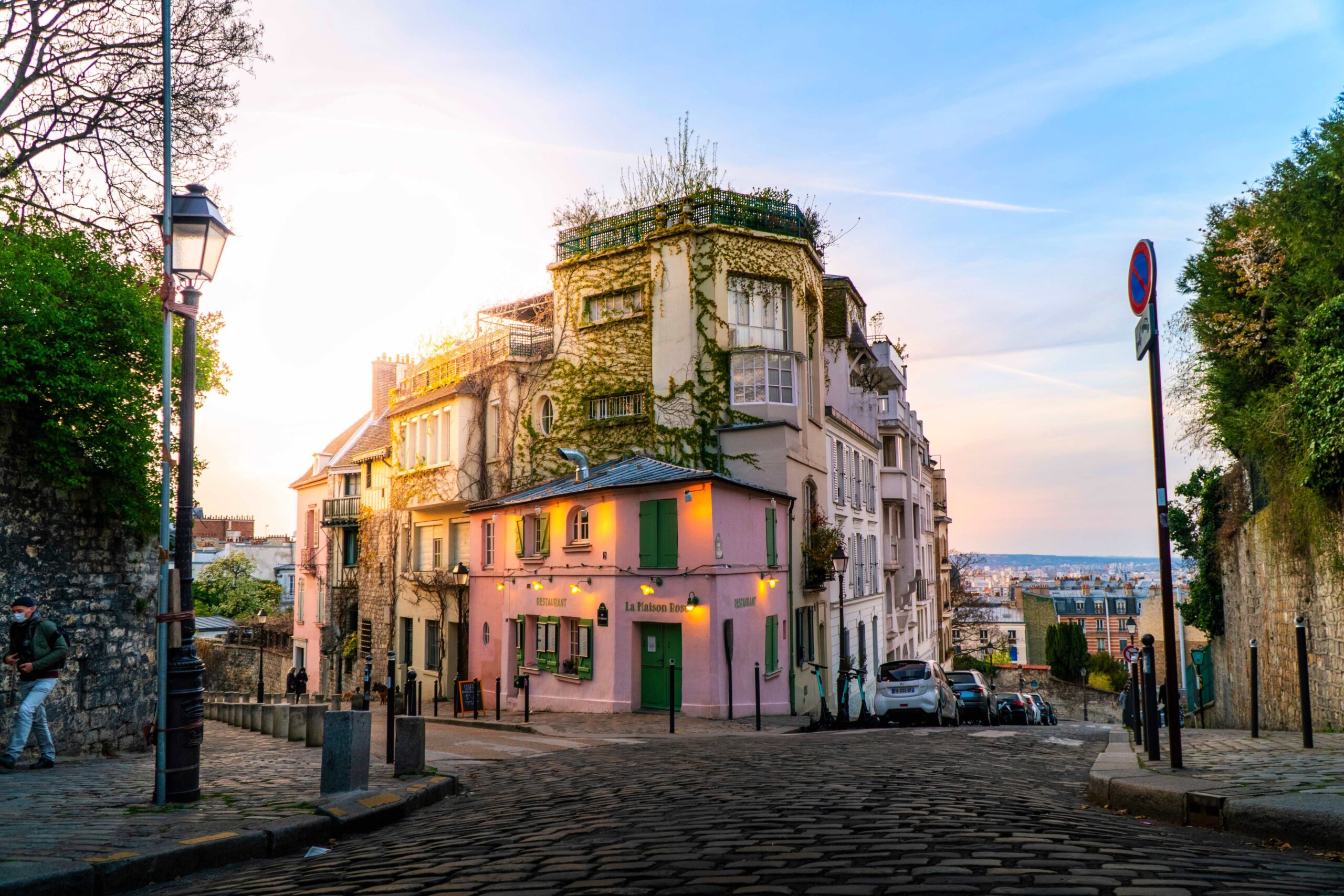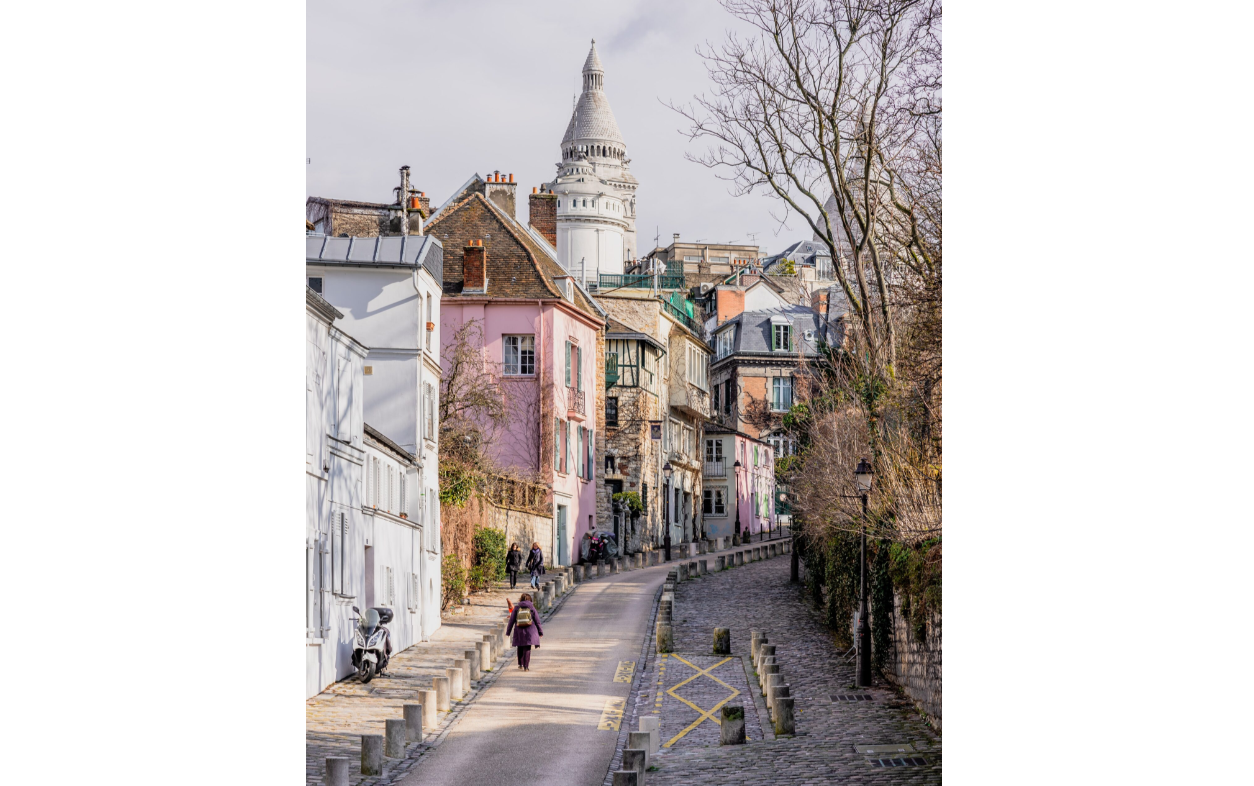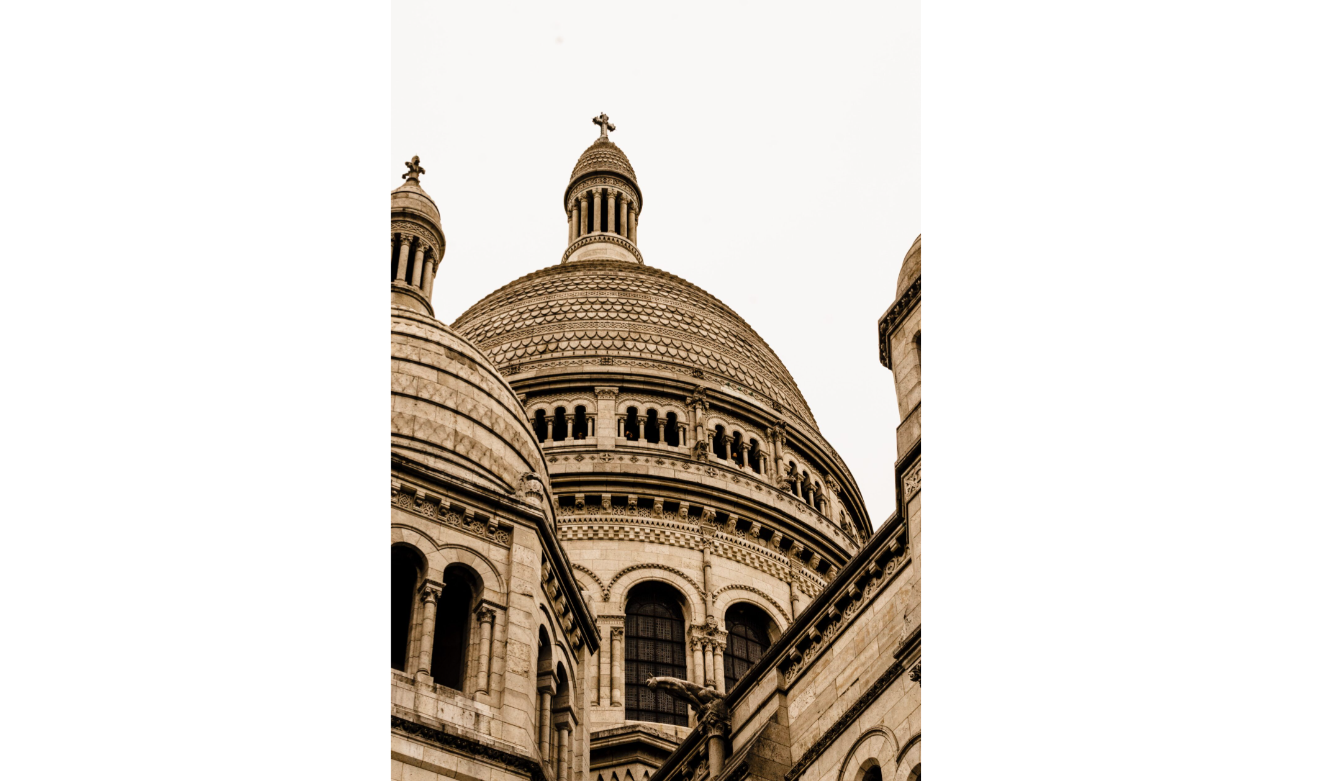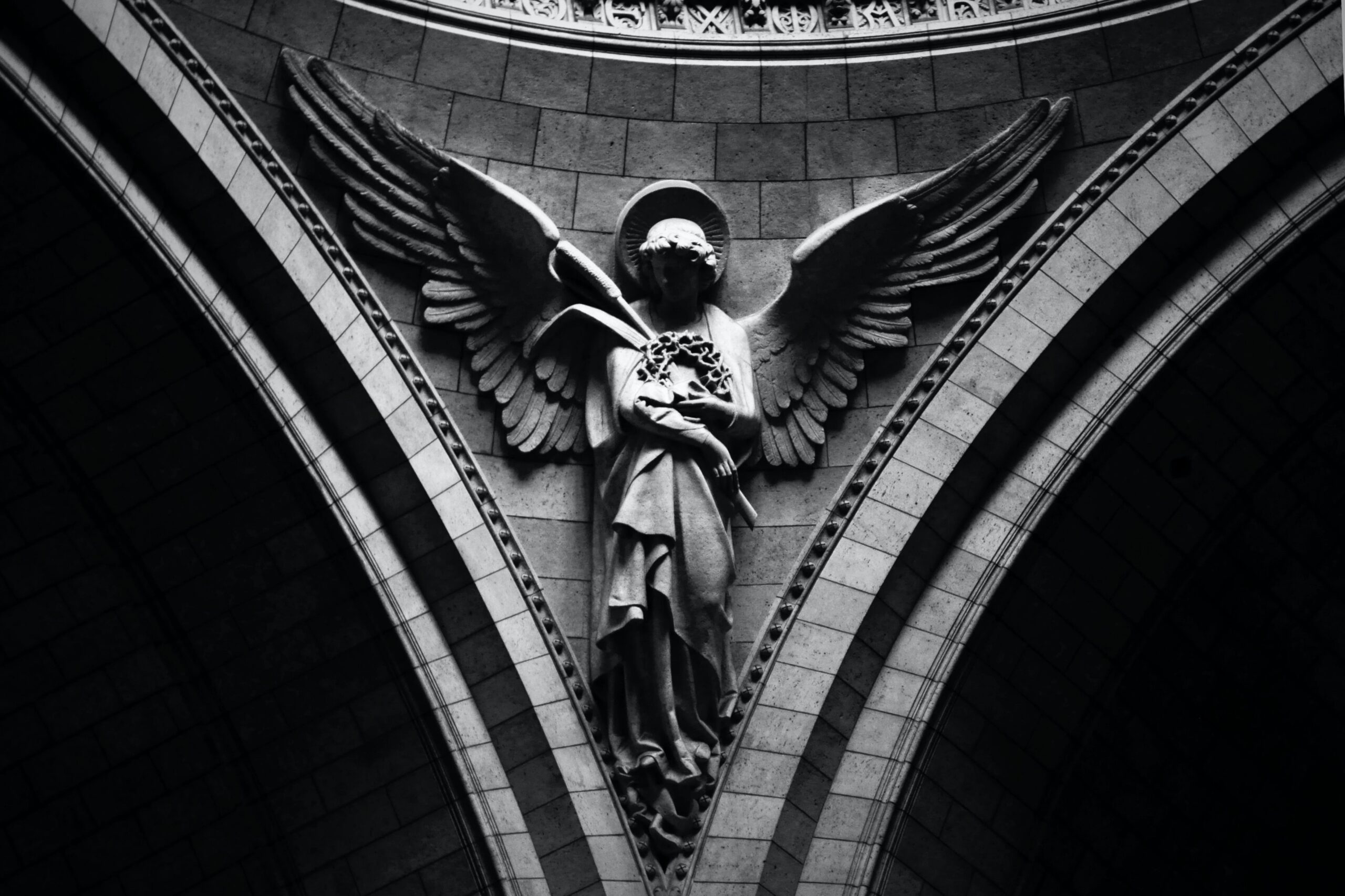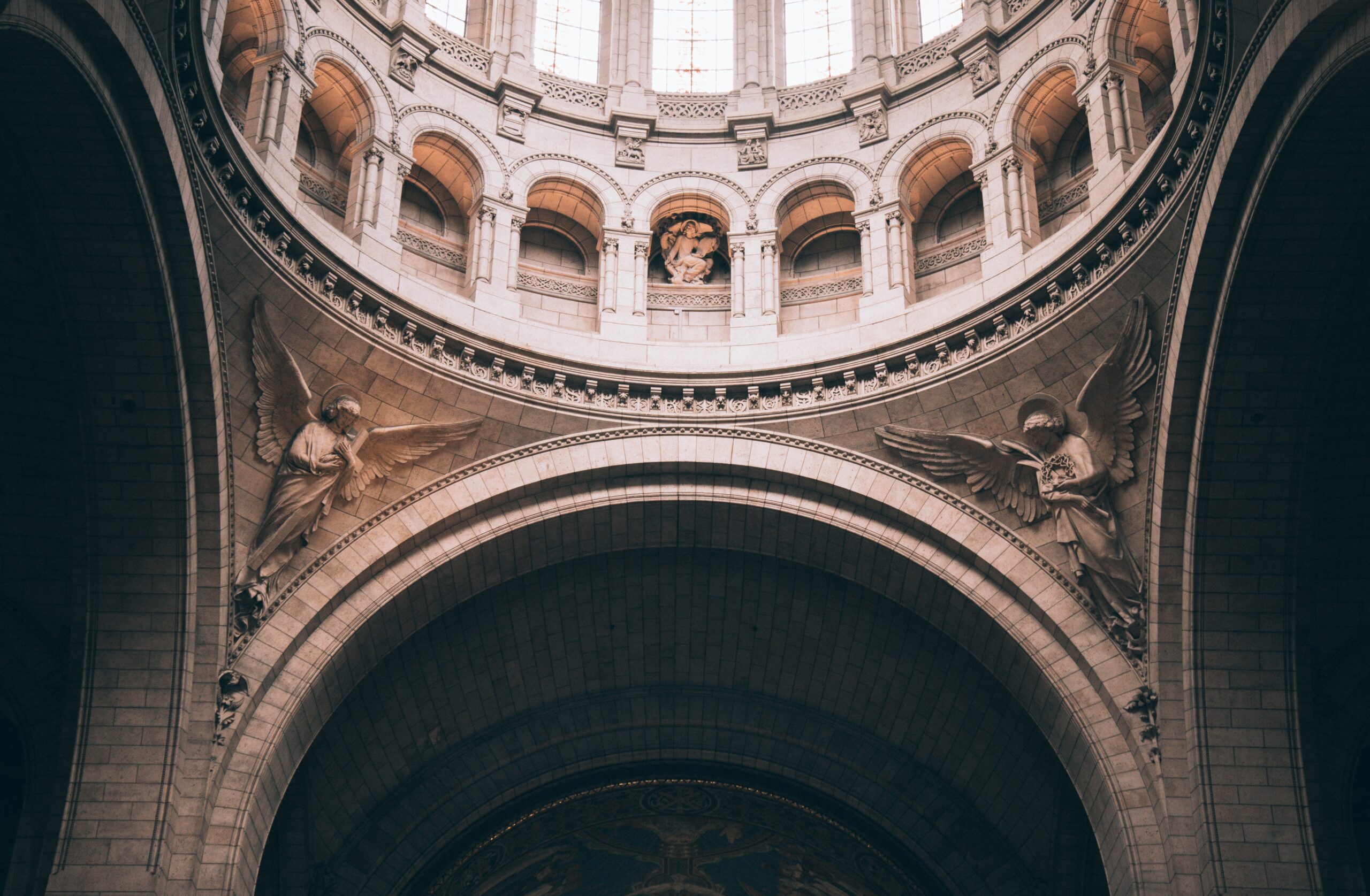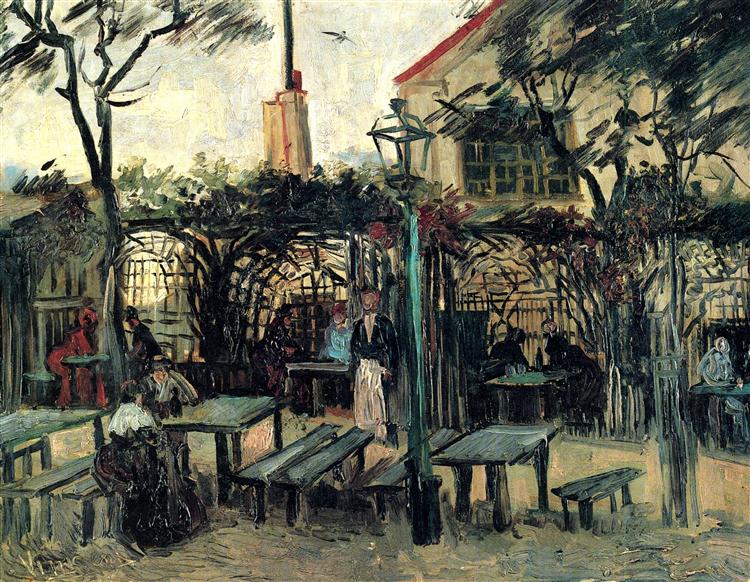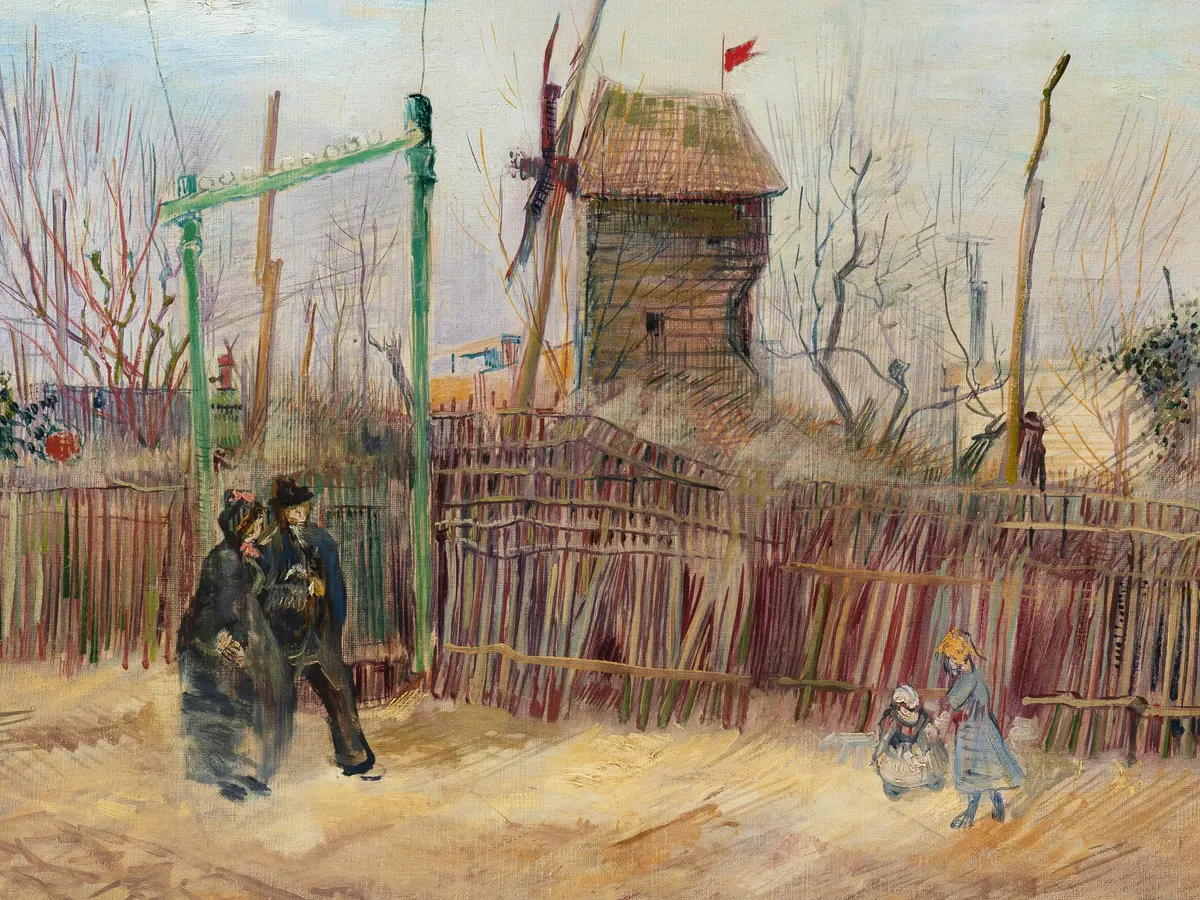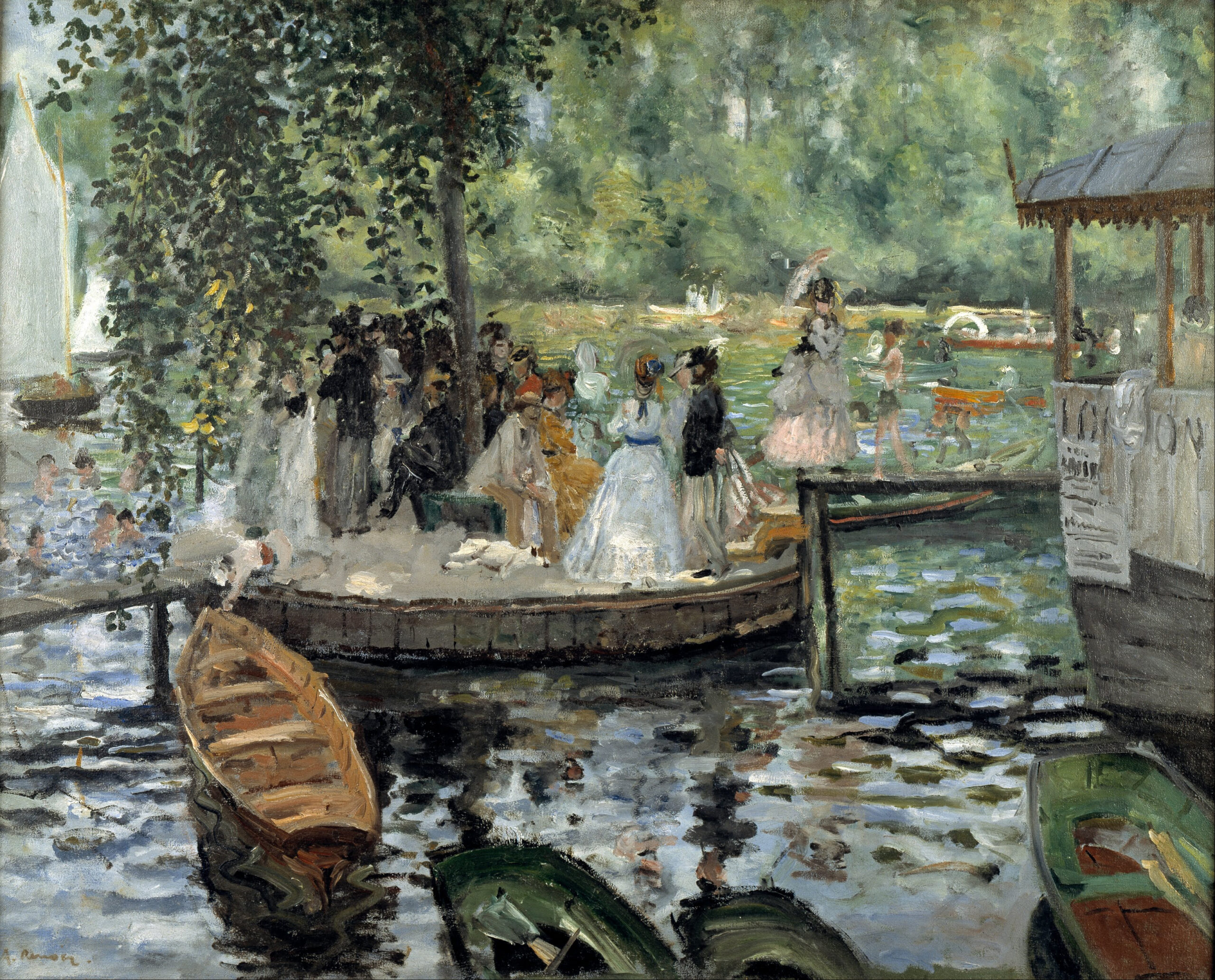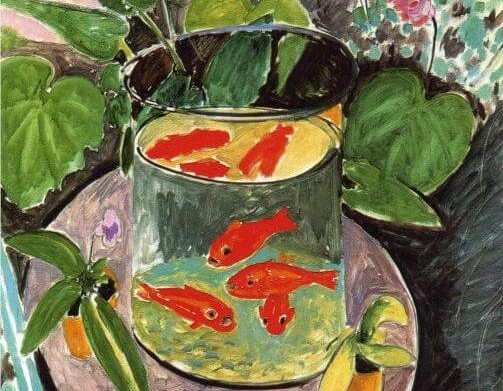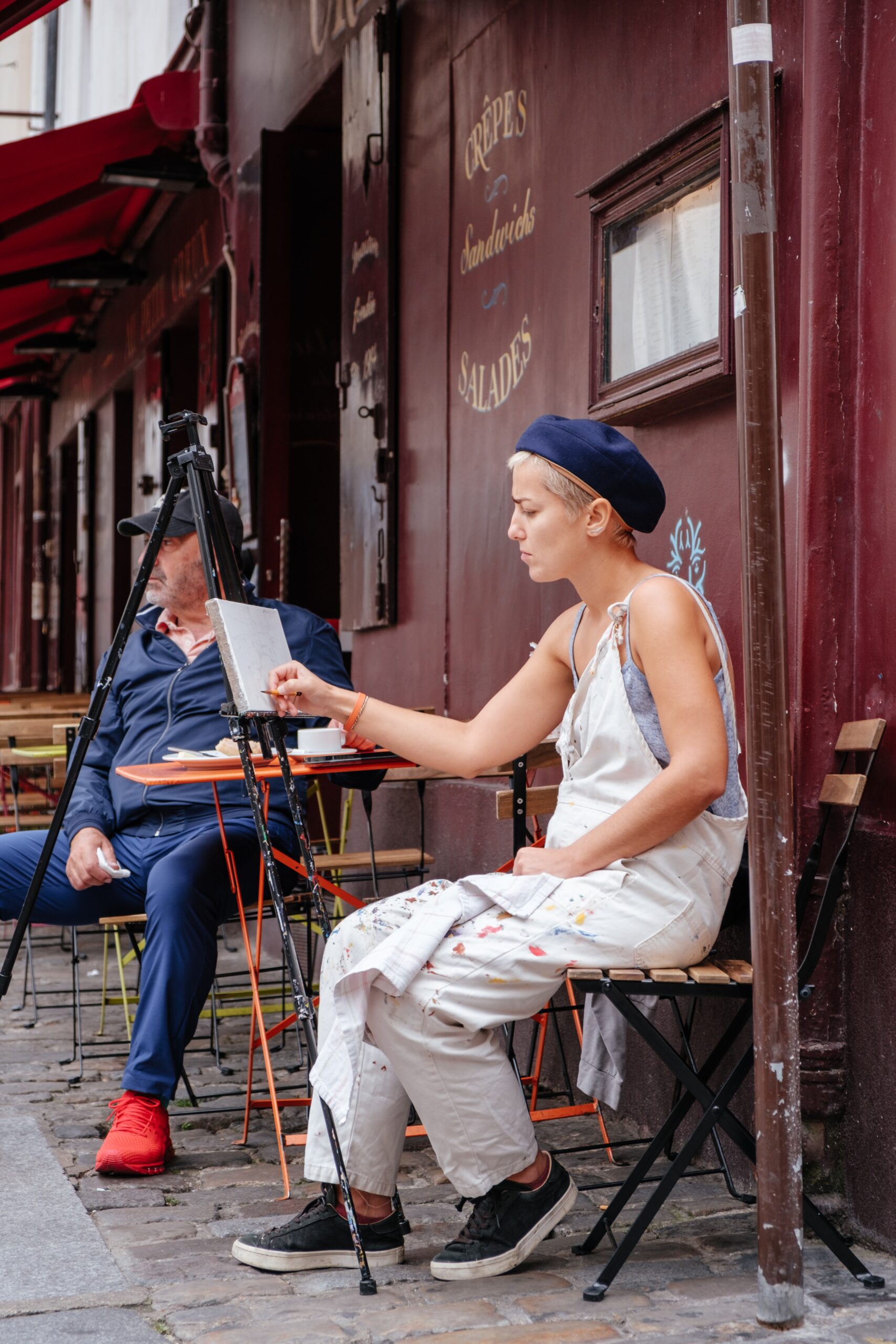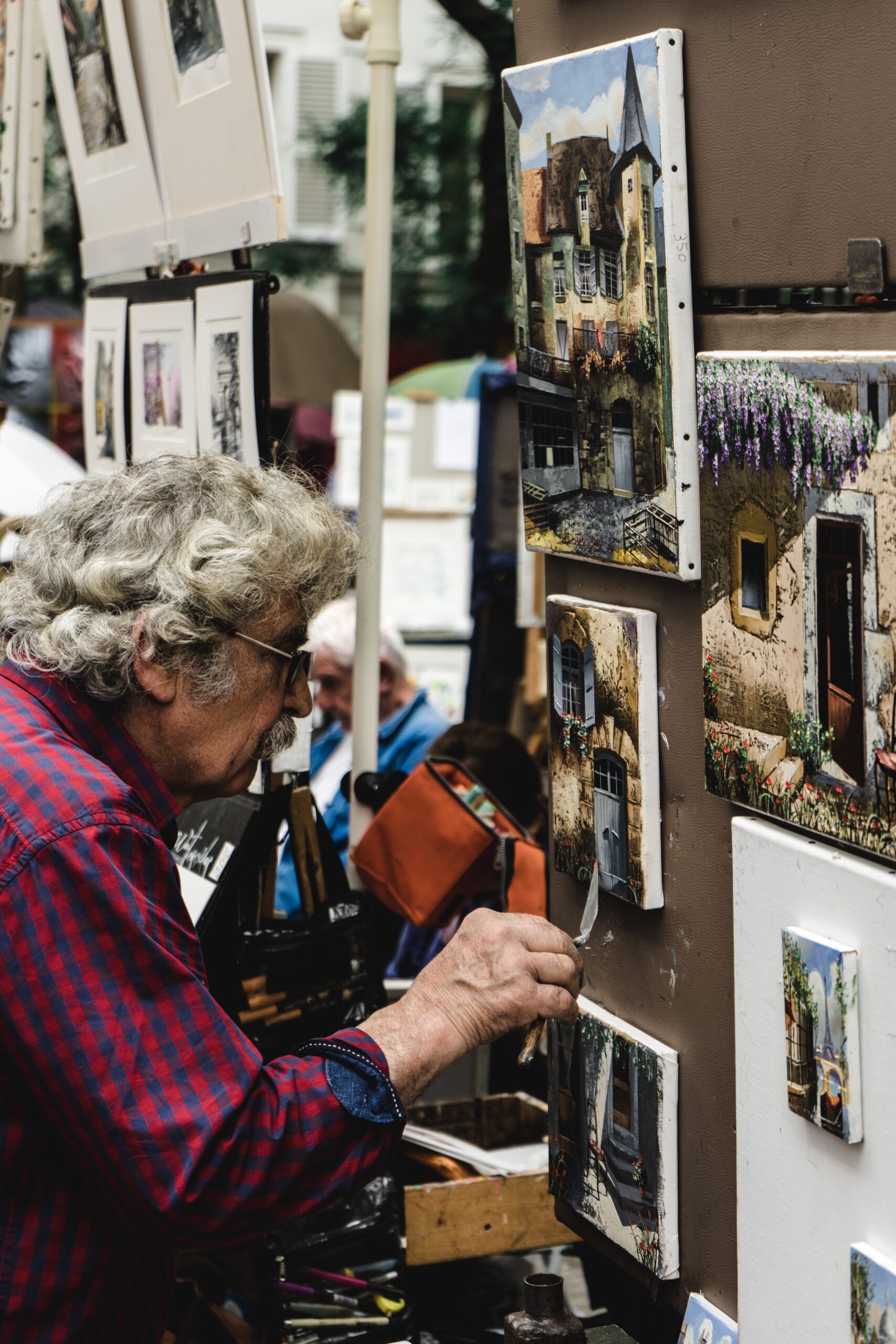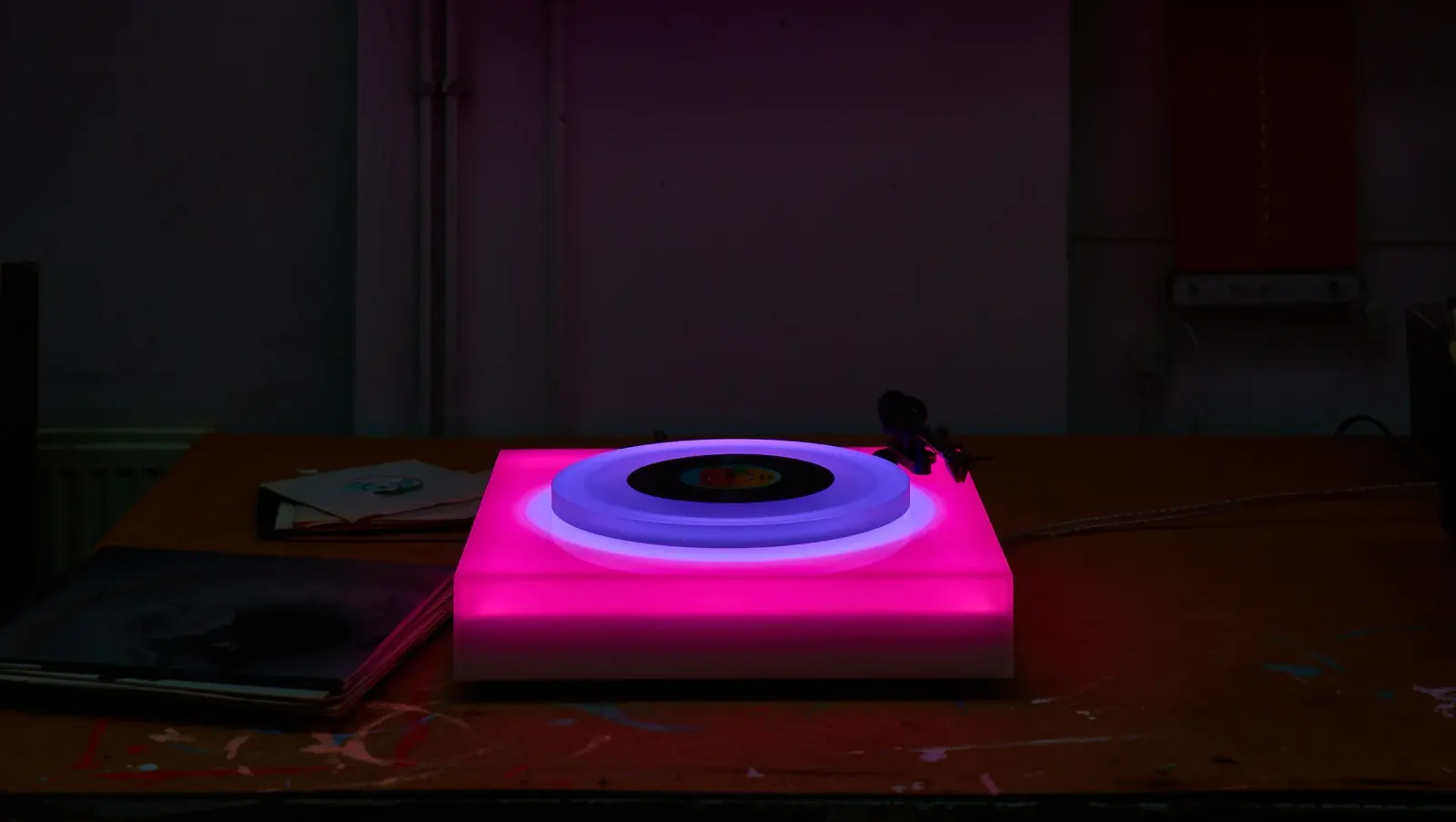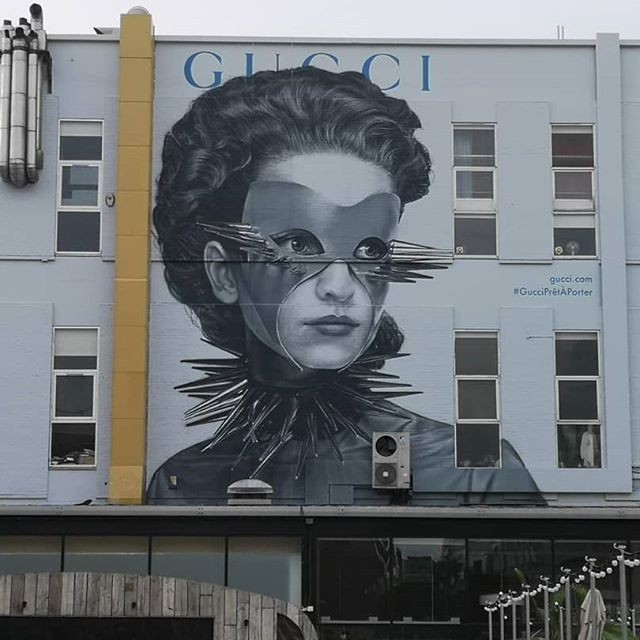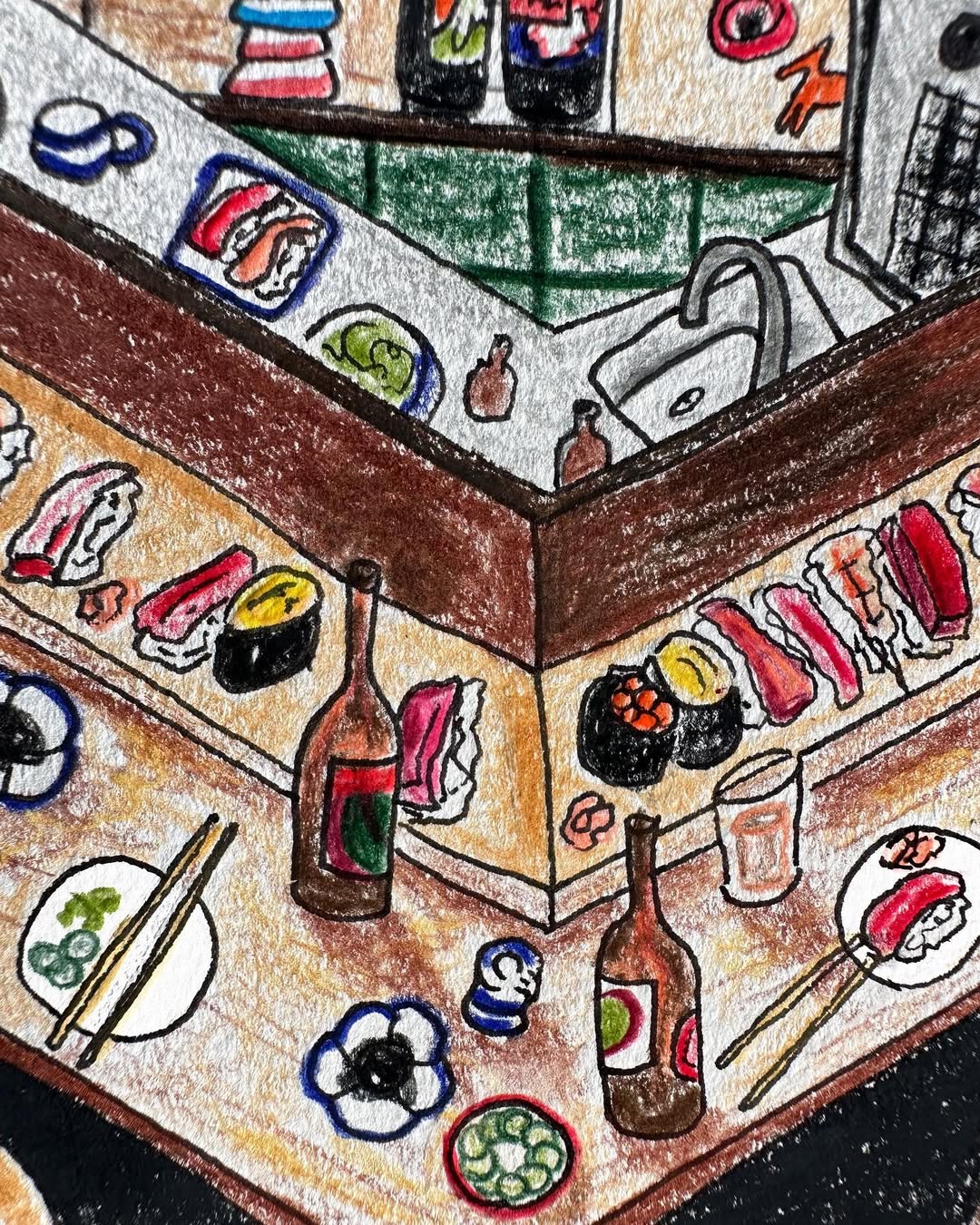From ‘Casablanca’, ‘Midnight in Paris’ to ‘Amelie’, there are a wide range of films, songs, poems and many more forms of art that have tried to capture the enchanting charisma of Paris.
Renowned to be the ‘city of love’, Paris has many dimensions that enhance its fantastical nature. There is love in the gentle aroma of freshly baked croissants that waft from the boulangerie on the corner. There is love in the way street lights flicker on a chilly winter’s night. I could go on because it is incredibly difficult not to romanticise such a picture perfect city. The beauty of Paris is that it remains untainted by the future. It exudes a certain old school charm that many other cities mistake as stagnation of the past. Moments and spaces seem suspended in time as you walk on each street.
A whimsical street in Montmartre.
When I reached the city, I realised there was more to it than its famed aura of romance. This epiphany only dawned on me when I visited Paris’ art-district of Montmartre. Structured on a large hill in the city’s 18th arrondissement, Montmartre reaches 130 metres in height, and is a part of the Right Bank in the northern section of the city.
Basilica of Sacré Coeur de Montmartre.
Atop Montmartre sits the Basilica of Sacré Coeur de Montmartre, commonly known as Sacré-Cœur Basilica and often simply Sacré-Cœur – a Roman Catholic church and minor basilica.
I had visited many basilicas before, so I wasn’t particularly excited – but I had to honour the promise to my younger self and explore this one. Upon reaching the steps of the grand structure of Sacré-Cœur, I could see why it was called the ‘Sacred heart of Montmartre’. Not only was the architecture of the basilica awe-inspiring, but the view from these steps was akin to the opening frame of Disney movies, where the visual of a magical castle takes over the screen.
Architectural details, Sacré-Cœur.
After basking in the glory of this surreal feeling created by the panoramic view of the city, I made my way down the cobblestone streets. Once home to some of the art world’s most renowned painters, now this gentrified place is a shadow of its rich history. Its history is still visible in parts, as it continues to be the artistic heart of the city. The district is teeming with options for art and culture fanatics.
Montmartre – The History
When Napoleon the third was on the throne, he was prone to gifting land to his friends and followers. The land was often in the centre of Paris, resulting in the eviction of the poor who were occupying houses that were to be gentrified. The homeless residents tended to move out from the centre to the outskirts, and Montmartre was a popular option.
Thus, began the artistic evolution of this nook of the city. Bars, cafés, cabarets and brothels started opening up to cater for the new inhabitants of the area, and many creative people were drawn to this lively part of the town on top of the hill. The reputation of the area fluctuated from the cheapest part of town that became home to “starving artists’’ – to the hub for artists of the city during the Belle Époque (dated to between 1871–1880) period.
According to a legend, Picasso would draw sketches in Café de la Rotonde in Montmartre, to sell in exchange for food in his time here as a struggling artist. This address became the home of legendary artists such as Edgar Degas, Henri Matisse, Toulouse-Lautrec, Pierre-Auguste Renoir, Vincent van Gogh, Salvador Dali, Picasso, Suzanne Valadon- amongst many others. Vincent van Gogh lived with his art dealer brother Theo from 1886 to 1888 at 54 Rue Lepic in Montmartre. The blue-coloured door number 54 is still a popular pitstop of art-lovers visiting the area.
L-R: (Top) La Guinguette, Vincent Van Gogh; Scène de Rue à Montmartre, Vincent Van Gogh;
(Below) La Grenouillère, Pierre-Auguste Renoir; Goldfish, Henri Matisse.
Montmatre has been through its own cycle of evolution and each turn of this gave birth to creations that changed the history of art forever.
One can delve into this art world of the past, by visiting the Musée de Montmartre where you can wander around the former artists’ studios. The museum was created in 1960 in one of the oldest buildings on the Butte, La Maison du Bel Air, which was built in the 17th century and was famously the workshop of Renoir.
Before you walk uphill to the museum, you may pass an unassuming door black door with a small crowd outside it. At first, I was baffled at the significance of this small door and the large glass window, but then I looked up and read the words ‘Le Bateau-Lavoir’. I was standing outside a historical landmark of the art world. Le Bateau-Lavoir was where artists such as Théophile Steinlen, Amadeo Modigliani, Henri Matisse, Van Gogh, Edgar Degas and Henri de Toulouse-Lautrec worked and lived. The building was instrumental in providing a space and a flourishing environment for artists, scholars, theatre personas and art dealers in the early 20th century. At the onset of the 20th century, Paris was undoubtedly the centre of the artistic universe – and Montmartre was the hub for that.
Artists on the streets of Montmartre.
If you are a fan of surrealism, the Dalí Paris pays homage to Salvador Dali and his works that played a fundamental role in how we perceive surrealism and how he popularised the genre. If you wish to meander away from exhibitions of art, the restaurant La Bonne Franquette is a must-visit. Based on the simple motto of “love, eat, drink and sing”, the historic establishment became the meeting place of many painters and poets who presumably congregated there to honour the restaurant’s famous motto. Moreover, in 1886, this is where Vincent Van Gogh painted his famous painting ‘La Guinguette’.
I could carry on with my recommendations and insights on why Montmartre not only played a crucial role in the history of art but how it adds to Paris being more than the cliché city of love. However, I feel it might take away from certain elements of surprise and wonderment that one can experience as they explore each crevice of this wonderful district themselves. Only by walking those streets did I discover that artists bloom when given the right environment to embrace their creative endeavours, and the space to bring these endeavours to life.
Words by Anithya Balachandran.
Images via Unsplash.
